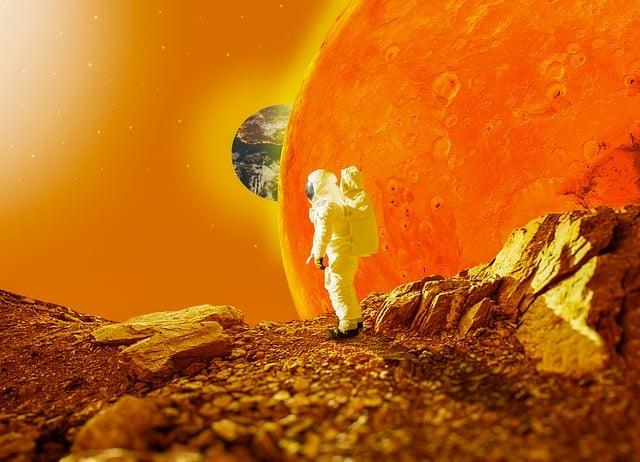In a world beneath our feet, five colossal plates danced in a silent rhythm, shaping the very land we walk on. The Pacific Plate, vast and powerful, roamed the ocean floor, while the North American Plate cradled mountains and valleys. To the east, the Eurasian Plate stretched across continents, a bridge of cultures. The African Plate, rich in history, held ancient secrets, while the South American Plate pulsed with vibrant rainforests. Together, they forged our planet, reminding us that beneath the surface, a dynamic story unfolds.
Table of Contents
- Understanding the Earths Tectonic Framework
- Exploring the Characteristics of Major Plates
- Impact of Plate Movements on Global Geography
- Strategies for Studying Plate Dynamics and Their Effects
- Q&A

Understanding the Earths Tectonic Framework
The Earth’s surface is a dynamic tapestry woven from the interactions of massive tectonic plates that float atop the semi-fluid asthenosphere. These plates are not merely static entities; they are in constant motion, driven by the heat from the Earth’s core and the forces of convection within the mantle. This movement leads to a variety of geological phenomena, including earthquakes, volcanic activity, and the formation of mountain ranges. Understanding the intricate dance of these plates is crucial for comprehending the planet’s geological history and the processes that shape its surface.
Among the numerous tectonic plates, five stand out due to their size and influence on global geology. These include the **Pacific Plate**, the largest and most significant, which underlies the Pacific Ocean; the **North American Plate**, which encompasses much of North America and parts of the Atlantic Ocean; the **Eurasian Plate**, covering Europe and Asia; the **African Plate**, which includes the continent of Africa and the surrounding oceanic crust; and the **South American Plate**, which supports the continent of South America. Each of these plates interacts with its neighbors at their boundaries, leading to a rich tapestry of geological activity that continues to shape our planet today.

Exploring the Characteristics of Major Plates
The Earth’s lithosphere is divided into several major tectonic plates, each with distinct characteristics that shape our planet’s surface. Among these, the **Pacific Plate** stands out as the largest, covering more than 63 million square miles. This plate is primarily oceanic and is known for its dynamic interactions with surrounding plates, leading to significant geological activity, including earthquakes and volcanic eruptions. Another notable plate is the **North American Plate**, which not only includes the continent of North America but also parts of the Atlantic Ocean floor. Its diverse landscape features mountains, plains, and a variety of ecosystems, showcasing the plate’s complex geological history.
Moving to the southern hemisphere, the **South American Plate** is characterized by the majestic Andes mountain range, formed by the collision with the Nazca Plate. This plate is rich in natural resources and biodiversity, making it a vital area for both ecological and geological studies. The **Eurasian Plate**, one of the largest plates, encompasses a vast region from Western Europe to Asia, exhibiting a mix of continental and oceanic features. Lastly, the **African Plate** is notable for its stability and the presence of the Great Rift Valley, a geological wonder that highlights the plate’s ongoing tectonic processes. Each of these plates plays a crucial role in the Earth’s geological framework, influencing everything from climate patterns to the distribution of natural resources.

Impact of Plate Movements on Global Geography
The dynamic movements of tectonic plates have a profound influence on the Earth’s geography, shaping landscapes and creating natural features that define our planet. As these colossal slabs of the Earth’s crust shift and interact, they give rise to a variety of geological phenomena. For instance, the collision of plates can lead to the formation of majestic mountain ranges, such as the Himalayas, which were born from the convergence of the Indian and Eurasian plates. Similarly, divergent boundaries, where plates pull apart, can create rift valleys and ocean basins, exemplified by the Mid-Atlantic Ridge, which is continuously reshaping the ocean floor.
Moreover, the movement of tectonic plates is responsible for seismic activity, which can dramatically alter landscapes in a matter of moments. Earthquakes, resulting from the release of stress along fault lines, can reshape coastlines and create new landforms. Volcanic activity, often associated with plate boundaries, contributes to the creation of islands and fertile soils, as seen in the Pacific Ring of Fire. The interplay of these geological processes not only influences the physical geography of the Earth but also impacts ecosystems and human settlements, highlighting the intricate relationship between plate tectonics and the world we inhabit.

Strategies for Studying Plate Dynamics and Their Effects
Understanding the dynamics of tectonic plates and their effects on the Earth’s surface requires a multifaceted approach. One effective strategy is to utilize geological mapping, which allows researchers to visualize the distribution and movement of different plates. By analyzing rock formations and fault lines, scientists can infer the historical movements of these plates and predict future shifts. Additionally, employing satellite technology provides precise measurements of plate movements over time, offering insights into the rates and directions of tectonic activity. This data can be crucial for assessing potential earthquake zones and volcanic activity.
Another important strategy involves the integration of computer simulations to model plate interactions. These simulations can replicate various scenarios, helping researchers understand the complex relationships between plates and their geological consequences. Furthermore, conducting field studies in areas of significant tectonic activity allows for firsthand observation of geological phenomena, such as subduction zones and rift valleys. By combining these methods, scientists can develop a comprehensive understanding of plate dynamics, ultimately contributing to better preparedness for natural disasters and enhancing our knowledge of Earth’s geological history.
Q&A
-
What are the five main tectonic plates?
The five main tectonic plates are:
- Pacific Plate
- North American Plate
- Eurasian Plate
- African Plate
- South American Plate
-
What is the significance of these plates?
These tectonic plates are crucial as they shape the Earth’s surface, causing earthquakes, volcanic activity, and the formation of mountains through their movements and interactions.
-
How do tectonic plates move?
Tectonic plates move due to convection currents in the Earth’s mantle, which create forces that push and pull the plates in various directions, leading to their interactions at plate boundaries.
-
What happens at plate boundaries?
At plate boundaries, various geological activities occur, including:
- Divergent boundaries: Plates move apart, creating new crust.
- Convergent boundaries: Plates collide, leading to mountain formation or subduction.
- Transform boundaries: Plates slide past each other, causing earthquakes.
understanding the five main tectonic plates not only unravels the mysteries of our planet’s dynamic nature but also highlights the intricate dance of geology beneath our feet. As we continue to explore, the Earth’s story unfolds, revealing its ever-changing landscape.

大家好,我是彼得潘,專業的手法身體治療師。我喜歡探索和研究各種主題,並透過與人工智慧的合作分享專業、實用、有趣的文章。我們定期進行人工審核,以確保內容的準確性。如果您發現文章中有任何不準確的地方,請隨時與我們聯繫,我們會及時糾正。您可以透過 [email protected] 與我們聯繫。



